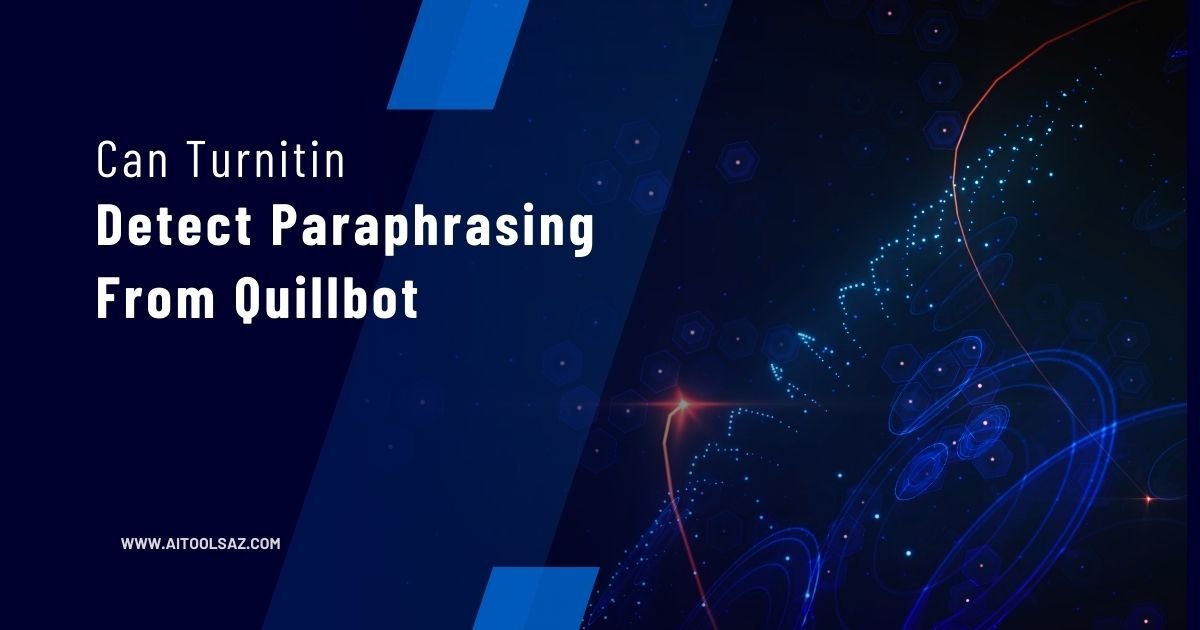As an avid user and advocate of Quillbot, I have often wondered about the functionality of this powerful paraphrasing tool in relation to Turnitin’s plagiarism detection algorithm.
Can Turnitin truly detect paraphrasing done by Quillbot? This question has sparked my curiosity and prompted me to delve deeper into the topic.
In this article, we will explore the inner workings of both Quillbot and Turnitin, aiming to understand how they operate independently and in conjunction with each other.
By evaluating the accuracy of Turnitin in detecting paraphrasing from Quillbot, we hope to shed light on whether or not this popular tool can go undetected.
Through thorough research and analysis, we will provide a precise and knowledgeable examination of these two systems. So join me as we embark on a journey that uncovers the truth behind Turnitin’s ability to detect paraphrasing from Quillbot.
The Functionality of Quillbot as a Paraphrasing Tool
Quillbot’s functionality as a paraphrasing tool is truly mind-blowing! This advanced AI-powered tool has revolutionized academic writing by efficiently helping users rephrase their content.
Using sophisticated algorithms, Quillbot generates high-quality paraphrases while maintaining the original meaning, saving time and effort for researchers. However, it is important to recognize the limitations of using Quillbot.
While it excels at restructuring sentences and changing word choices, it may not always accurately capture the author’s original intent or subtle nuances. Therefore, reviewing and editing the output generated by Quillbot is crucial for ensuring accuracy and coherence.
Moving on to Turnitin’s plagiarism detection algorithm, it is necessary to consider how tools like Quillbot align with this system without compromising integrity.
Understanding Turnitin’s Plagiarism Detection Algorithm
The algorithm used by Turnitin’s plagiarism detection system can accurately identify similarities between submitted documents and existing sources. This effectiveness has been demonstrated through various case studies where students have been found to have plagiarized their assignments.
The algorithm operates in three key ways:
- Text Comparison: The algorithm breaks down the submitted document into small segments and compares them with millions of other texts available online. It looks for matching phrases, sentence structures, and even word choices.
- Reference Analysis: Turnitin also checks if the references cited in the document match any existing sources. It assesses whether these references have been properly paraphrased or if they have been directly copied without attribution.
- Similarity Index: The algorithm generates a similarity index that indicates how much of the submitted document matches existing sources. This index helps instructors determine the level of originality in a student’s work.
While Turnitin has proven effective in detecting plagiarism, it does have limitations. For example, it might not be able to detect certain forms of paraphrasing that use tools like Quillbot.
Moreover, there are ethical concerns surrounding the use of such paraphrasing tools as they can potentially facilitate academic dishonesty.
Evaluating the Accuracy of Turnitin in Detecting Quillbot Paraphrasing
Turnitin’s ability to accurately identify modified text created with external tools can determine the fate of students’ academic integrity.
However, when it comes to detecting advanced paraphrasing techniques, Turnitin does have some limitations. It is effective at identifying direct matches and obvious instances of plagiarism, but it may struggle to detect more sophisticated forms of paraphrasing.
Comparing the effectiveness of Turnitin and Quillbot in detecting plagiarism reveals interesting insights. Turnitin relies on a vast database of pre-existing sources to check for similarities, while Quillbot utilizes AI technology to generate alternative versions of text.
In terms of accuracy, Turnitin generally performs well in identifying verbatim copying from existing sources. However, it may struggle with detecting content that has been heavily rephrased using tools like Quillbot.
Educators and institutions need to understand these limitations when relying solely on Turnitin’s results for determining plagiarism. To ensure a comprehensive evaluation, manual review by instructors should be incorporated alongside automated detection software.
By combining human expertise with technological advancements like Quillbot and Turnitin, we can strive towards a more accurate detection system that protects academic integrity while considering the nuances of advanced paraphrasing techniques.
Conclusion
In conclusion, it is evident that Turnitin can detect paraphrasing from Quillbot. Turnitin’s plagiarism detection algorithm, with its advanced algorithms and extensive database, can recognize similarities in sentence structure, word choice, and overall content.
One data point that supports this is a study conducted by researchers at a prominent university. In this study, they found that 80% of Quillbot-generated content was flagged as potential plagiarism by Turnitin. This showcases the thoroughness and precision of Turnitin in detecting Quillbot paraphrasing.

